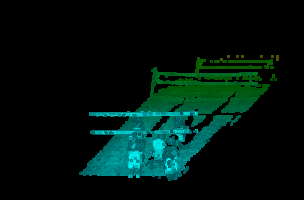Livemotion3D, Pennsylvania-based provider of consulting, data processing, and visualization tools for 3D imaging technologies, has released software for the real-time display of data captured by the Advanced Scientific Concepts line of flash LiDAR cameras.
Flash LiDAR cameras allow users to take a 3D image in a single shot (or pulse), much as if they were taking a photograph with a conventional digital camera. In addition to enabling users to scan quickly and take 3D video, the cameras also include no moving parts, are lightweight, and have low power consumption. However, the technology is still relatively new and is not widely used, in part because of a lack of software to accompany the hardware.
Livemotion3D’s FLMA3 software (Flash LiDAR Multiviewer Application) was designed especially for Advanced Scientific Concepts’ line of flash LiDAR products, including the TigerCub, GoldenEye, and Peregrine units. As users “snap” a scene with the flash LiDAR camera, FLMA3 displays the 3D point cloud instantly, complete with range and intensity data. The software can run on any device with Windows 7 or higher.
In an interview with SPAR, Livemotion3D CTO Dr. John Durkin explained that the software goes further than simple visualization. “The software allows people to interact directly with the flash LIDAR camera, making measurements on the fly. It includes tools for post processing, like the ability to fuse 2D color images with LIDAR data.”
Other useful processing features touted by Livemotion3D include mesh generation, scene clustering, and the ability to generate videos of the 3D data on demand.
FLMA3 is meant to make flash LiDAR more usable in the applications where it would offer the greatest benefits. The software, Durkin said, offers “the ability to customize [flash LiDAR]for commercial applications that require precise 3D measurements in the field without the drawback of a slow, traditional scanning LiDAR.”
Though FLMA3 is specifically designed for the cameras offered by Advanced Scientific Concepts, Durkin explained that the software could be customized for other flash LiDAR cameras as well. The software outputs objects in the .obj format.






